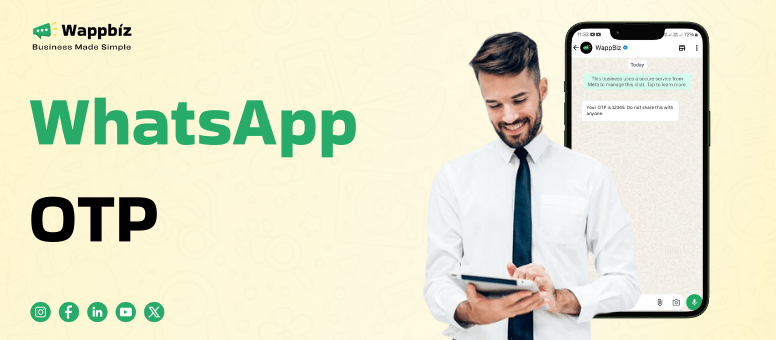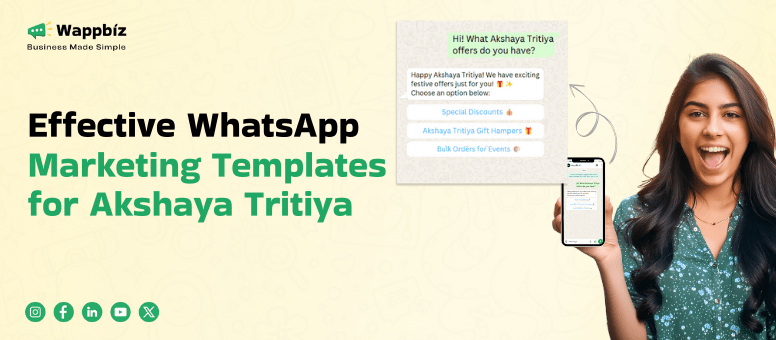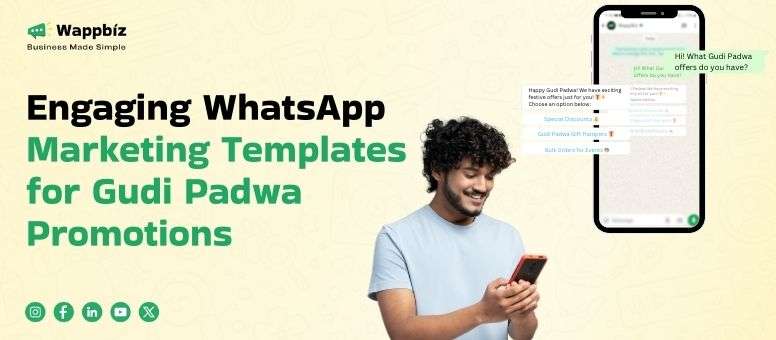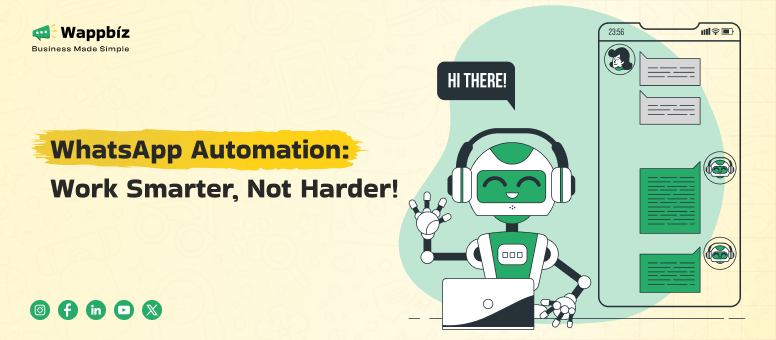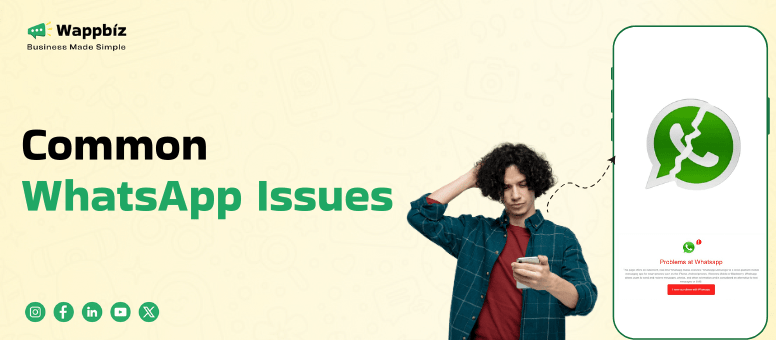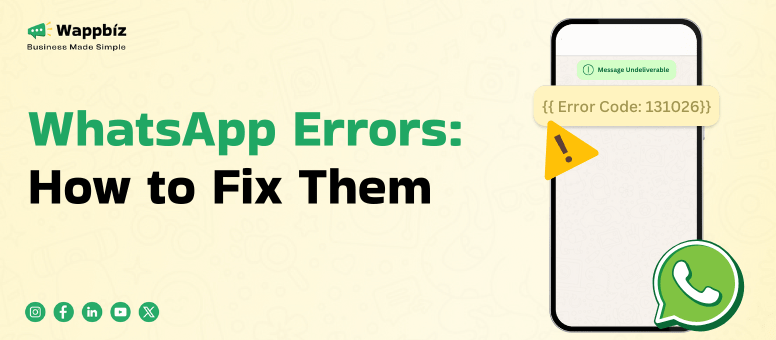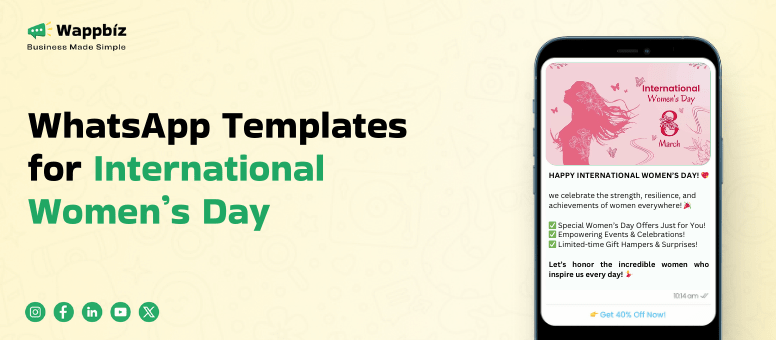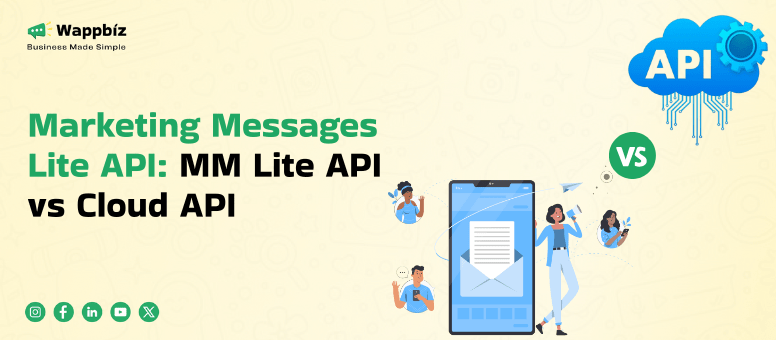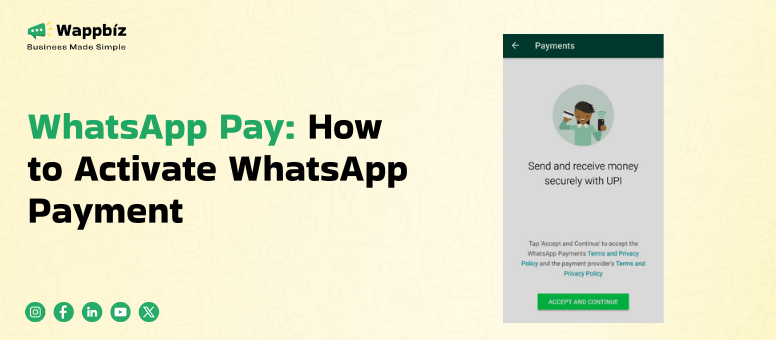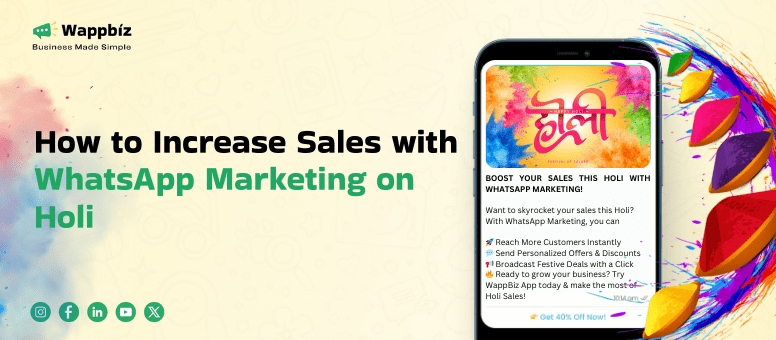With the advancement in technology today as well as the digital landscape we evolve each day, making sure to secure user authentication service is very crucial. What are one-time passwords (OTPs) OTPs have become a popular way of verifying user identities in transactions, logins, and various sensitive operations. OTPs, which are typically delivered via SMS or email, are also being increasingly sent over WhatsApp, taking advantage of the fact that thousands of billions of people use it and that WhatsApp has several security features in place.
This ultimate guide discusses how to send OTP using WhatsApp, benefits, use cases, methods of implementation, and a comparison between WhatsApp OTP and SMS OTP. We’ll also cover some common questions to guide businesses in streaming lining their authentication strategies.

What is WhatsApp OTP?
A one-time password (OTP) is a temporary code sent to WhatsApp users used for authentication and verification. It is usually used for validating a user on logging in, signing up, or secure transaction.
How Does WhatsApp OTP Work?
User Requests Verification:
- A user inputs his phone number into an app or website.
- OTP is requested by the system.
OTP is Generated & Delivered Over WhatsApp:
- A one-time password (e.g., 123456) is produced.
- Such an OTP is then, sent to the user WhatsApp account, as a message.
User Enters OTP:
- The user enters the OTP received on the app or website.
OTP is verified:
- The system verifies whether the OTP is valid or not.
- If true, the user gets access, and if false, they are prompted to try again.
How to Send OTP on WhatsApp?
Sending OTP (One-Time Password) On WhatsApp : Most Secure & Most Useful To set it up, follow these steps:
Step 1: Obtain WhatsApp Business API Access
The standard WhatsApp app does not support direct OTP-based transmission. You must use the WhatsApp Business API, which is available through:
- Meta (Facebook Business Manager)
- Official WhatsApp Business Solution Providers (BSPs) such as Wappbiz, Twilio, Gupshup, WATI, 360Dialog, or Kaleyra
Step 2: Create a WhatsApp Business Account
- Make a Business Account on Facebook Business Manager.
- Meta (Facebook) Business Verification
- The process of registering a phone number for use in WhatsApp API.
- If you do not connect directly via Meta, select a BSP.
Read More: WhatsApp Business Account
Step 3: Pre-approve Your OTP Message Template
All business messages must have pre-approved templates on WhatsApp.
- For example, submit an OTP message template:
- “Your OTP is. Do not share it with anyone.”
- The template is approved and reviewed before being available for you to use on Meta.
Step 4: Integrating WhatsApp API with Your System
- Connect the WhatsApp API with your website, mobile app or CRM system.
- Use the dashboard or automation tools of your preferred BSP to send OTPs.
Step 5: Send the OTP
- Your data is trained until under October of 2023.
- Your system creates a unique OTP.
- The OTP is sent to the user’s WhatsApp number with the approved template.
Step 6: OTP Verification
- The OTP is entered by the user in your application or website.
- OTP validation is done on your system.
- If the answers are accurate access is given.
- If this is not correct, the user is prompted to try again.
Advantages of sending OTP via WhatsApp over traditional methods:
They are a common form of authentication for users, and used for account verification and secure transactions. Traditionally, OTP delivery via SMS and email has been the norm, albeit WhatsApp OTP is a more secure, cheap, and reliable option. Here is an in-depth analysis of why WhatsApp OTP is better than traditional methods.
1. Higher Delivery & Read Rates
Why is it Important?
OTP is only as effective as the speed with which users receive the OTP and their ability to rely on it. Failure or Delay of OTP Delivery → Frustration, Drop-Offs, Security Risk
- Open-rate of WhatsApp OTPs is 98%, while SMS OTPs have around 20-30% and email OTP open-rate between 15-25%.
- WhatsApp messages also easily circumvent mobile carrier restrictions and email spam filters so that OTPs are delivered to users in real time.
- Carriers can block SMS OTPs, while emails tend to get stuck in spam folders, delaying authentication.
Real-World Impact
For context, a financial institution leveraging WhatsApp OTP saw a 40% reduction in login failures, as WhatsApp messages have significantly higher deliverability compared to SMS.
2. Faster OTP Delivery
Why is speed important?
One Time Passwords verification needs real time user validation. OTP (one-time password) can be received on time or late, and if the OTP is late, the user may abandon the process and this leads to anger and lost business of OTP.
- WhatsApp messages are sent immediately over the internet (WiFi or mobile data), SMS OTPs may be delayed due to network congestion.
- International SMS OTPs take a couple of minutes, and WhatsApp OTPs can be read in seconds.
- Since email OTP provider relies on email server speed, Deliverytime will not be consistent.
Real-World Impact
One fintech company saw WhatsApp OTP verification times 3x faster than SMS OTPs, resulting in a 15% improvement in successful logins.
3. You can pass their User-to-User Encryption & Security
Why is Security Important?
OTP are used for the protection of sensitive user data. An OTP is susceptible to being intercepted, stolen, or manipulated, which can result in identity theft, fraud, and unauthorized access.
- WhatsApp messages are end-to-end encrypted, which means the OTP can only be seen by the sender and receiver.
- SMS OTPs can be affected by SIM swapping, SS7 protocol security issues, and interception.
- Phishing attacks could intercept OTP codes in emails, tricking users into disclosing their usernames and passwords.
Real-World Impact
A bank switched to WhatsApp OTP for high-value transactions and reported a 50% reduction in fraud cases due to enhanced security.
4. Cost-effectiveness, particularly in a context of international verification
Why is cost a factor?
OTP international SMS can be expensive for businesses processing thousands of verifications a day.
- As WhatsApp uses the internet as its backbone, it is cheaper than SMS, most importantly for international users.
- SMS OTP is charged internationally, which is why this option is costly for businesses that work in different countries.
- Email OTPs are inexpensive but their reliability is very poor and they can also fall victim to spam filtering.
Real-World Impact
An e-commerce company with global customers lowered its OTP delivery costs by 60% after switching from SMS OTP to WhatsApp OTP.
5. Works on Wi-Fi & Data No Dependence on Mobile Network
Importance of Network Independence
- People using low-network areas or visiting abroad will face an issue in receiving the SMS OTP timely causing failed login and transaction.
- WhatsApp OTPs are not network-specific so they work over WiFi and mobile data.
- SMS OTPs depend on carrier networks, which might be unstable or inaccessible in certain areas.
- Therefore, emails need to be connected to the internet and may have delays in synchronization.
Real-World Impact
In some regions where mobile networks were too weak, a ride-hailing app built using WhatsApp OTP experienced a 30% drop in customer complaints.
6. Lower Risk of Spam & Phishing
Why is This Important?
- Phishing attacks through SMS and email are commonly deployed by cybercriminals to gain access to OTP and commit fraud.
- WhatsApp OTPs arrive at accounts that are authenticated by business vendors, making them less susceptible to phishing attacks.
- An SMS OTP can be intercepted and a user can get a fake message in the name of the bank or service provider.
- Email OTPs can also be easily fake, and phishing attacks can lead users to fake login pages.
Real-World Impact
A banking app for WhatsApp Otp saw a 70% drop in customer support tickets related to clients falling for phishing scams.
7. Multi-Device Accessibility
Why is This Important?
- Users frequently switch between devices, making it difficult to have OTPs received on a single SIM card.
- You can receive WhatsApp OTPs on various linked devices, such as WhatsApp Web, desktop, and mobile.
- As SMS OTPs are limited to a single SIM card, they are unavailable if a user changes devices.
- Not only are email OTPs on several devices.
Real-World Impact
WhatsApp OTP across multiple devices improved user experience by 40% for a cloud service provider.
8. Customizable & Targeted Communication
Why is This Important?
- OTP spam messages that are personalized and harmful messaging are unlikely to be obnoxious.
- This gives brands a more distinctive and authentic impression than OTP messages which are sent via WhatsApp.
- SMS OTPs are limited to plain text and thus less engaging.
- Emails branding is allowed; but the engagement rate is low.
Real-World Impact
One online payment service increased its customers trust by 25% after adopting branded WhatsApp OTP messages.
9. Automated OTP Resends & Multi-Channel Verification
Why is This Important?
Users may miss OTP messages due to technical issues, distractions, or spam filters.
- WhatsApp allows automated OTP resends, improving successful verification rates.
- SMS OTPs lack automation in most cases and require manual retries.
- Emails often get ignored or buried under other emails.
Real-World Impact
A SaaS company increased OTP success rates by 30% after introducing automated WhatsApp OTP resends.
| Feature | WhatsApp OTP | SMS OTP | Email OTP |
| Security | End-to-end encryption, less vulnerability to interception. | Vulnerable to SIM swap, SS7 attacks, and phishing. | Vulnerable to email breaches and phishing. |
| Delivery Reliability | High reliability, dependent on internet connectivity. | Dependent on mobile networks, prone to delays. | Subject to email delivery delays and spam filters. |
| Speed | Instant delivery with higher open rates. | Delays are possible due to network issues. | May be delayed due to spam filtering. |
| User Engagement | High engagement due to WhatsApp’s frequent usage. | Lower engagement as SMS can be ignored or blocked. | Lower engagement; emails may go unread. |
| Multi-Device Support | Works on multiple linked devices. | Limited to a single mobile device. | Accessible on multiple devices. |
| Spam & Fraud Protection | Messages are from verified business accounts, reducing fraud risk. | Prone to spam and phishing attacks. | High risk of spam and phishing attempts. |
This table presents the advantages of WhatsApp OTP over traditional OTP methods in a clear format. Let me know if you need modifications.
OTP on WhatsApp : Use Case Examples
WhatsApp OTP (One-Time Password) can be utilized in numerous sectors for secure authentication, user verification, and transaction validation. Here are some real-world use cases of WhatsApp OTP, detailing how businesses derive benefits from it.
1. Log in to a user account and pass verification
Use Case: Secure Login Authentication
Sector: Social Media, Fintech, Banking, Retail
Scenario:
- When a user logs in to an app, the user enters their phone number.
- For authentication, system issues an OTP through WhatsApp.
- You provide the OTP, and access is given.
Benefits:
- Easier to log in than SMS OTP.
- Increased read & delivery rates, fewer login fails.
- Increased safety thanks to end-to-end encryption.
Example:
Recommendation: 2FA OTP over WhatsApp Reduced 30% Failed Logins On A Banking App As OTP over WhatsApp Delivered in Few Seconds
2. User Registration and Onboarding
Use Case: Account Signup & Verification
Sector: Online Marketplaces, E-commerce, EdTech
Scenario:
- The new user registers for an account with their phone.
- An OTP is sent to the number they have registered via WhatsApp to validate their identity.
- The account is created successfully after OTP validation.
Benefits:
- Keeps bots and fake accounts at bay.
- OTP Pushed on Time for Seamless Onboarding
- Minimizes dependence on email verification, which can end up as spam.
Example:
A WhatsApp OTP use case on a popular EdTech platform also achieved 20% higher successful registrations due to better OTP success rates.
3. Transactional Verification and Secure Payment
Case Study: 2FA Authentication for Payments
It brings a greater level of elegance to fintech and expands further into digital wallets, e-commerce and crypto exchanges.
Scenario:
- A customer performs a high-value transaction or an online payment.
- On transaction, WhatsApp OTP sent for confirmation through a system.
- The user inputs OTP, which is verification, to complete the payment.
Benefits:
- Protects against fraud and unauthorized payment
- Transaction approvals much faster than SMS OTP
- Can work in low-network zones with WiFi.
Example:
An OTP over WhatsApp was implemented by a fintech startup to use for confirmation of payments, which reduced the number of unauthorized transactions by 40%, he said.
4. Defensive Computing: Password Recovery & Reset
Use Case: Secured Password Reset
Sector: Banking, E-commerce, Social Media, SaaS Platforms
Scenario:
- Scenario: A User wants a reset password.
- Identity is verified with a WhatsApp OTP that is sent by the system.
- If validated, the user is permitted to reset their password.
Benefits:
- Blocks unauthorized password reset attempts.
- Can recover faster than OTP over email (which can go to spam).
- More secure than SMS, mitigates phishing threats.
Example:
Password reset requests plummeted 35% for a SaaS Platform using WhatsApp OTP for password resets.
5. Order Confirmation and Verification
Use Case :Verifying Orders with High Dollar Value
Company: E-commerce, Retail, Logistics
Scenario:
- An order can be placed above some amount & also if the User has Cash on Delivery (COD).
- An OTP is received on WhatsApp to confirm the order.
- The order is processed after OTP verification.
Benefits:
- Stops fraudulent orders and delivery failures.
- Validates the order by the actual customer.
- More engaging than SMS, so confirmations come quick.
Example:
Qwikcilver’s partnership with one of India’s leading e-commerce brands resulted in a 25% reduction in COD order cancellations using WhatsApp OTP to confirm orders.
6. Subscription & Service Activation
Use Case: Onboarding Digital Services
Sector: Telecom, Streaming Services, SaaS
Scenario:
- A customer signs up for a new service, a cell phone plan or a streaming service.
- A WhatsApp OTP is sent for activation confirmation.
- Now the user enters the OTP, and the service is delivered.
Benefits:
- Verifies that the user signing up is a real one & and prevents fraudulent accounts.
- Quicker service fulfilment than emails OTPs.
- Instant access for faster customer experience
Example:
One telecom provider, for instance, adopted WhatsApp OTP for SIM activations and saw an almost 30 per cent decline in spam registrations on its network.
7. Customer Support Verification
Use Case: Secure Customer Identity Verification
Industry: Banking, Telecom, E-commerce
Scenario:
- A user reaches out to customer support with a sensitive request (account update, transaction dispute, etc).
- Before proceeding, the system sends a WhatsApp OTP to verify identity.
Benefits:
- Blocks unauthorized support requests.
- Removes the need for manual security questions, speeding up response time.
- This increases trust in customer service communications.
Example:
A bank that used WhatsApp OTP for customer confirmation saw a 40% reduction in fraud cases in support requests.
8. Attendance & Access Control
Use Case : Authenticate Employee or Visitor
Category: Corporate Offices, Events, Secure Facilities
Scenario:
- An employee or visitor requests access to an organization’s sensitive building, room, or event.
- The system sends them a verification OTP via WhatsApp.
- Access granted after OTP verification.
Benefits:
- No more physical access cards or paper-based registration
- More secure than a QR code, which can be copied.
- Minimizes manual check-in and enhances security.
Example:
A corporate office used WhatsApp for OTP while doing entry verification, making access control easier but more secure.
9. Verify Loyalty & Rewards Program
Use Case: How Loyalty Points Can be Redeemed
Industry: Retail, Hospitality, Air travel
Scenario:
- A user who intends to redeem loyalty points or discount vouchers.
- OTP via WhatsApp to confirm the redemption request.
Benefits:
- It prevents fraudulent redemptions.
- Ensures that rewards go only to authentic users.
- Increased user experience through rapid verification.
Example:
50% reduction in loyalty program abuse for a hotel chain using WhatsApp OTP for rewards redemption
In conclusion, WhatsApp OTP is the solution for secure authentication in 2025
With increasing concerns regarding security online, businesses want quick, reliable and secure authentication to secure user accounts, transactions and apps. WhatsApp OTP is a much more effective option than SMS and email OTPs since it has a high delivery success rate, is more cost-effective, and is more secure than other means.
WhatsApp OTP mitigates fraud risks, increases user experience, and allows smooth authentication for a range of scenarios such as login verification, transaction approvals, password resets, and order confirmations, all thanks to end-to-end encryption, instant message delivery, and global accessibility.
Key Takeaways:
- Elevated Security: WhatsApp OTP is end-to-end encrypted; this means you are at a significantly lesser risk of having your OTP intercepted or you being actually frauded than an SMS or an email.
- Speedier Delivery & Elevated Read Rates: WhatsApp OTP guarantees instant message delivery through the application with an open rate of 98%, without the threat of being trapped by spam filters.
- Cost-Efficient: For worldwide businesses, USA phone number in Nigeria via SMS OTP is expensive because international messaging rates are comparatively lower with USA number in Nigeria.
- Multi-Device Support: SMS OTPs can be received only through SMS, whereas WhatsApp OTPs can be received through WhatsApp Web, mobile and linked devices.
- Enhanced User Experience: Interactive and branded messaging establish trust in customer engagement.

FAQ’s
What is WhatsApp OTP?
WhatsApp-based OTP (one-time password) for authentication and verification
How does WhatsApp OTP work?
A user requests an OTP, the system generates the OTP and sends it to the user as a WhatsApp message, the user enters the OTP and the system verifies his access.
What makes WhatsApp OTP superior to SMS OTP?
It has better delivery rates, encryption from end to end, faster delivery, cheaper international rates, and support for multiple devices.
Do you need to pay for WhatsApp OTP?
Normally $0.005 – $0.015 per conversation, less expensive than SMS OTP for global authentication.
Is WhatsApp OTP secure?
Yes, it’s not intercepted like SMS (which is subject to SIM swap).
How fast is the OTP delivery by WhatsApp?
Its instant — SMS can be delayed as a result of network congestion.
Is it possible to use WhatsApp OTP for payments?
Well, it is popularly used in banking, digital wallets, and secure transaction verifications.

